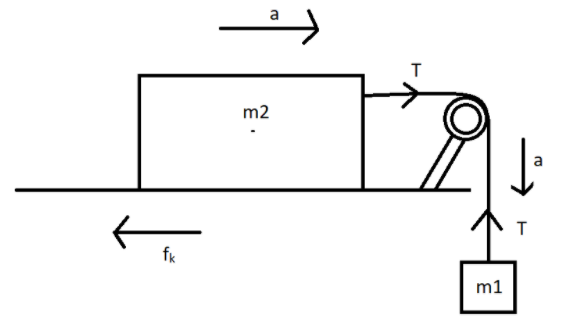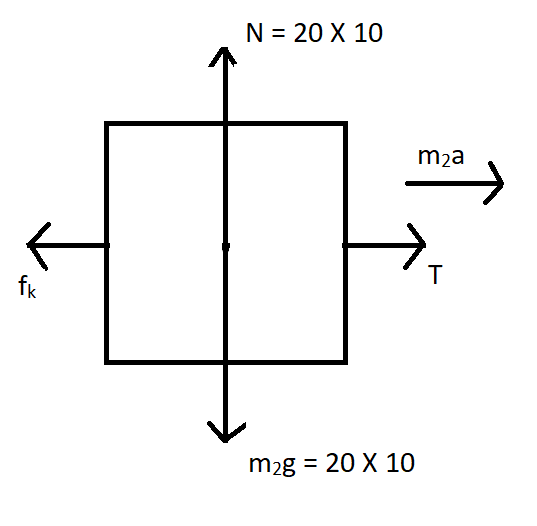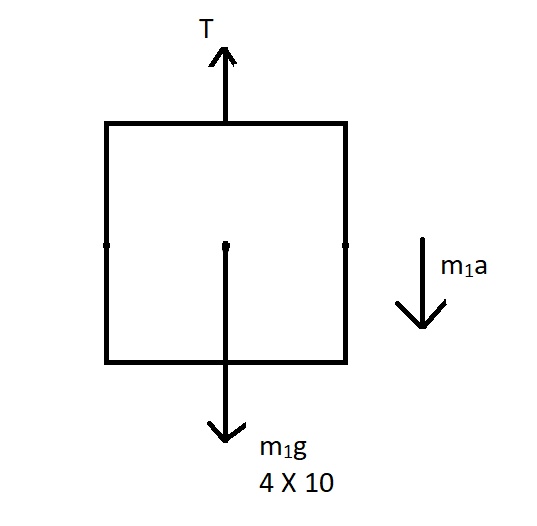Question
Question: The coefficient of kinetic friction is \(0.03\) in the diagram where mass \({m_2} = 20kg\) and \({m_...
The coefficient of kinetic friction is 0.03 in the diagram where mass m2=20kg and m1=4kg. The acceleration of the block shall be (g=10ms−2).

A.1.8ms−2
B.0.8ms−2
C.1.4ms−2
D.0.4ms−2
Solution
To solve this question we must know what acceleration means. Acceleration can be defined as the rate of change of the velocity of an object with respect to time. Acceleration is a vector quantity which means they have both magnitude and direction. According to Newton's second law ‘the acceleration of an object (a) is proportional to the force (F) applied on it’, and the proportionality factor is the object's mass (m).
Complete answer:

Given that,
Mass of m1=4kg
Mass of m2=20kg
Coefficient of kinetic friction is given by,
uk=0.03
Let the acceleration of blocks be ‘a’
Now consider free body diagram of m2

Its equation of motion is given by,
m2a=T−fk m2a=T−(ukN) 20a=T−0.03×200 20a=T−6 - - - - - - - - - - - - - equation1
Now by considering m1 , its free body diagram is given by,

m2a=m1g−T 4a=40−T−−−−−−− equation 2
Hence by adding both the equation we get
24a=34 a=2434 a=1.4ms−2
Hence the acceleration of the block is 1.4ms−2
Note:
The three types of acceleration are as follows-
Uniform acceleration: When an object is travelling in a straight line with an increase in velocity at equal intervals of time, then the object is said to be in uniform acceleration. Free falling of an object is said to be an example of uniform acceleration.
Non-uniform acceleration: When an object is travelling with an increase in velocity but not at the equal intervals of time is known as non-uniform acceleration. Bus moving or leaving from the bus stop is an example of non-uniform acceleration.
Instantaneous acceleration: Acceleration of an object at any instant of time is known as instantaneous acceleration.
